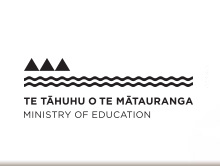Ngā Tamatoa a Rāhiri: Kaharau (wh. 6–9)
He whakarāpopoto
Kei te taumata o tōna pā i Pākanae a Rāhiri e whakawhiti kōrero ana ki a Tangaroa-whakamanamana mō ngā nekehanga o ngā iwi kē o te takiwā nei. Kei te tutū pakanga a Kaharau i te taha o ōna hoa. Ka kitea tōna toa ki te mau rākau.
Summary
Rāhiri is on the summit of Pākanae, his pā, talking with Tangaroa-Whakamanamana about the movements of the different tribes within the region. Kaharau is practising war games with his friends. His skill at handling weapons is apparent.
| Te momo reo tuhi Language style |
|
|---|---|
| Ētahi āhuatanga o tēnei momo reo tuhi Features of this language style |
|
I te Ākonga e Pānui ana i te Pukapuka
During Reading
He Ngohe
Anei ētahi whakaaro mō ētahi ngohe e hāngai ana ki ngā kōrero katoa o roto o Whakawhiti 33, Tūhoronuku. Ka taea e te pouako ēnei te whakamahi kia tutuki ai ngā whāinga whakaako me ngā whāinga ako. Ka taea anō e ia te rāwekeweke ēnei whakaaro kia hāngai ake ki ngā whāinga ako me ngā hiahia o ngā ākonga.
Learning Activities
Here are some ideas for learning activities aligned with the writing in Whakawhiti 33, Tūhoronuku. Pouako can use these to help achieve their teaching and learning objectives. These ideas can be adapted to align with the learning objectives and needs of the students.
1. Tautohutia kia toru, kia whā rānei ngā rerenga reo tautoru.
Identify three or four third-person phrases from the story.
2. Mahi takirua. Ka mutu ana ngā ākonga te pānui, ka whiria e ngā ākonga ētahi o ngā rerenga kōrero he reo whakawhiti i roto. Kātahi ka pānuihia e rātou kia pēnei i te mahi whakaari.
Pairs activity. When students finish reading, students then select sentences with dialogue. Then they read them as a play.



